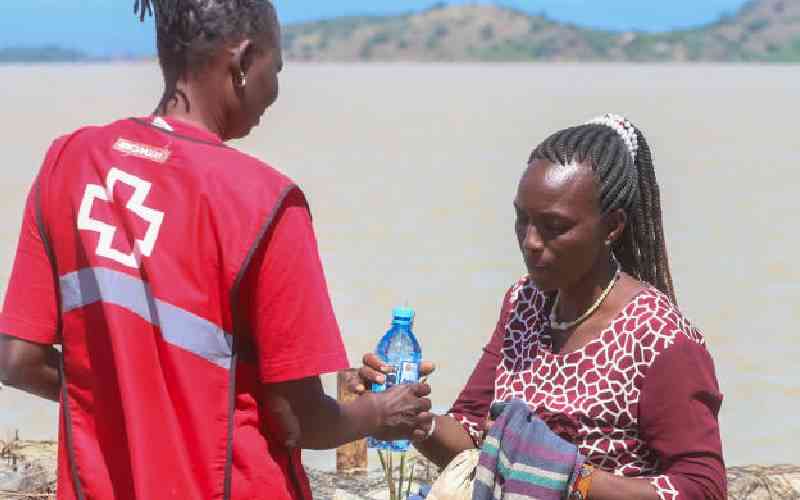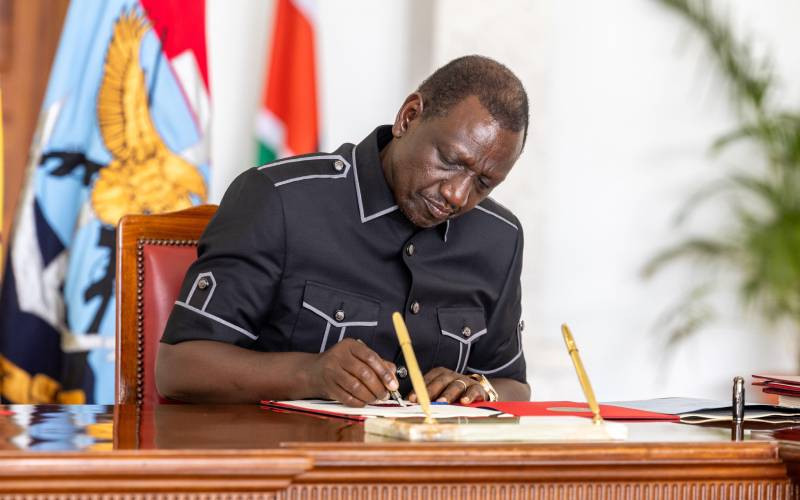Nothing is more powerful than an idea whose time has come and as President Uhuru Kenyatta made the symbolic journey from Mombasa to Nairobi on train on Wednesday to usher in a transformed railway transport, the country can only dream of a better future.
That the time when exploitative businessmen treated passengers with dislike and derision is over and the power returns to the people on choice of transport they want are like a dream come true.
According to Principal Secretary in charge of Transport, Prof. Paul Maringa Mwangi, the passenger train has a capacity of 1260 passengers including 118 passengers in each of the Economy Class coaches, 72 travelers in each of the First Class cars and 34 in the Premier Business Coaches. However, the freight services will not begin until December when the expansion and modernization of the Nairobi Inland Container Depot is completed.
“Five years ago, President Kenyatta made a promise to Kenyans to provide a transport service that had speed, reliability and competitive pricing,” said Mr Mwangi. “As he will be disembarking from the Train in Syokimau on Wednesday, the harshest of his critics will have had their answer.”
President Kenyatta’s journey coincided perfectly with the historic June 1 Madaraka Day celebrations, a day when Kenya attained internal-self-rule from the British colonialists. To most citizens, this simple train ride and the many to follow will provide them with the independency and sovereignty on a raft of choice to make the almost 500km trip either on road (private car), bus, train and air. In addition, there will be 30,000 direct jobs and another 10,000 indirect ones.
The Mombasa-Nairobi train service, with a capability to run at 120 km/hour will highlight one of the proudest moments on a 42-month journey that begun on November 28, 2013 when President Kenyatta and Deputy President William Ruto performed the ground breaking ceremony for phase one of the new SGR railway in Mombasa.
It replaces an over 100 year old railway system, breathing life in a sector that was chocking to death over its delays and unreliability. Critics can afford to look away knowing that the Sh327 billion project is a reality.
Stay informed. Subscribe to our newsletter
In a world where politicians are taken to account for their own words, President Kenyatta has delivered his on the Standard Gauge Railway. Jubilee Administration pledged to upgrade railway line to SGR, Jomo Kenyatta International Airport, the Mombasa port and the LAPSSET project. All have been delivered.
From Wednesday, you can easily schedule an 11am meeting in Mombasa, strike your deal and afford to take a leisurely lunch before catching the train back to Nairobi in time to take your children through homework.
The new dawn on train transport will not only edge out buses; it will end up being the transport means of choice for personal vehicle owners plying this route, meaning less environmental degradation and low road maintenance cost, thus less fuel levy.
The stretch between Mombasa and Nairobi marks the first part of the two-phase project. Funding for the first section of SGR’s second phase (Phase 2A) between Nairobi and Naivasha has already been secured from China.
Phase 2B of this critical infrastructural and economic artery runs between Naivasha, Narok, Bomet, Nyamira and Kisumu including the development of a new high capacity port at Kisumu. Phase 2C of the SGR connects Kisumu and Malaba through Yala and Mumias.
The new train service takes between four and a half hours (Express Service) to five hours ( Inter-County Service) from Nairobi to Mombasa cutting the time between the two cities from 9 hours by bus and 12 hours by the old and derelict trains.
Nairobi and Mombasa are the main termini of the ultra-modern SGR line with another 31 stations in-between. These termini include seven inter-mediate stations at Mariakani, Miasenyi, Voi, Mtito-Andei, Kibwezi, Emali and Athi- River where the Inter-County train will make 10-minute stop-overs as it snakes to either Nairobi or Mombasa , cruising at 120 km per hour.
 The Standard Group Plc is a
multi-media organization with investments in media platforms spanning newspaper
print operations, television, radio broadcasting, digital and online services. The
Standard Group is recognized as a leading multi-media house in Kenya with a key
influence in matters of national and international interest.
The Standard Group Plc is a
multi-media organization with investments in media platforms spanning newspaper
print operations, television, radio broadcasting, digital and online services. The
Standard Group is recognized as a leading multi-media house in Kenya with a key
influence in matters of national and international interest.
 The Standard Group Plc is a
multi-media organization with investments in media platforms spanning newspaper
print operations, television, radio broadcasting, digital and online services. The
Standard Group is recognized as a leading multi-media house in Kenya with a key
influence in matters of national and international interest.
The Standard Group Plc is a
multi-media organization with investments in media platforms spanning newspaper
print operations, television, radio broadcasting, digital and online services. The
Standard Group is recognized as a leading multi-media house in Kenya with a key
influence in matters of national and international interest.







